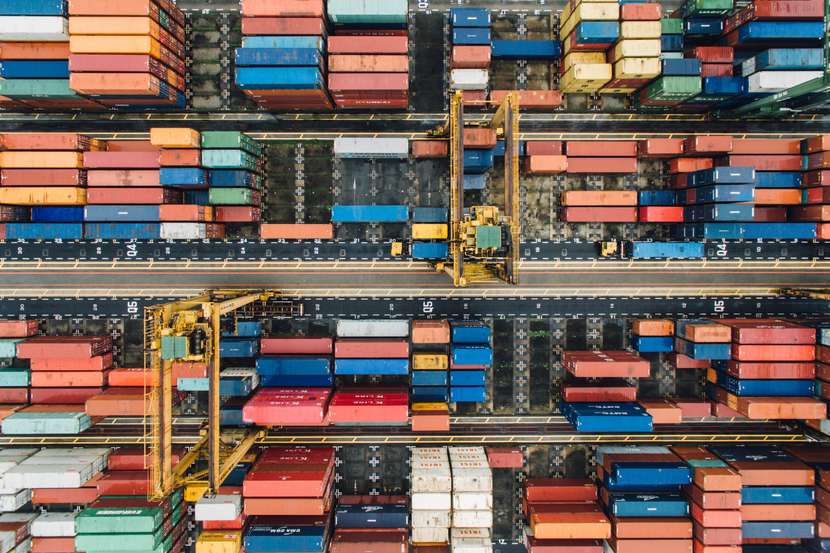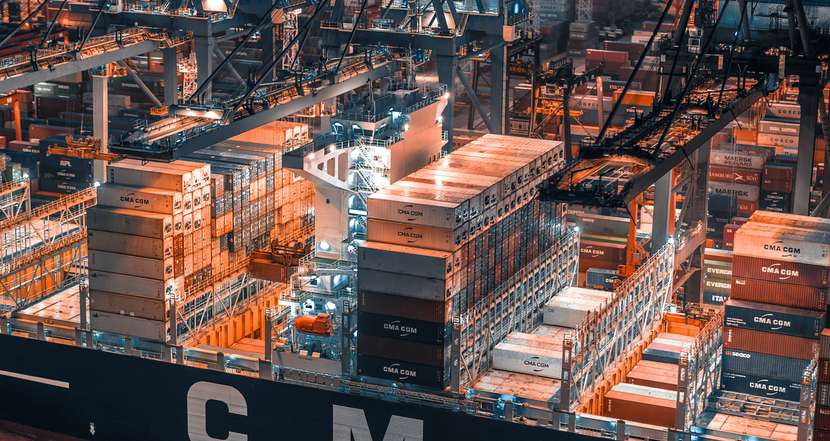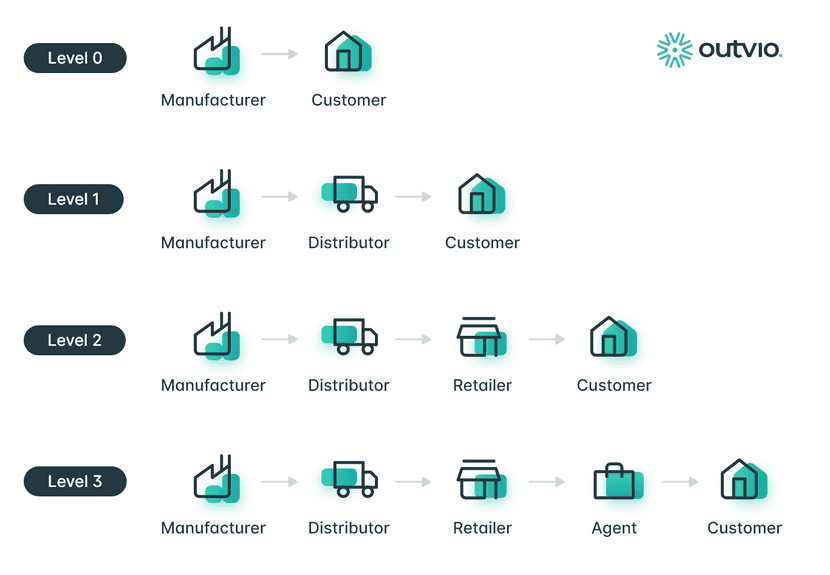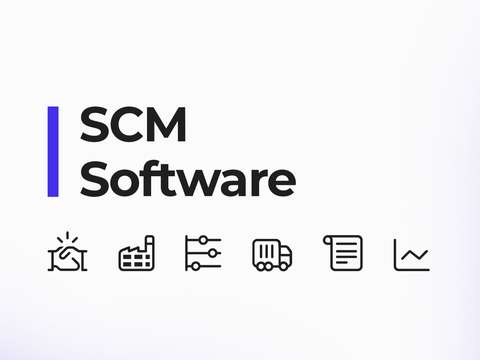Moving goods across the supply chain can mean huge expenses. This is why designing a strategy to minimize the use of resources and time is highly recommended. Use a distribution strategy to make your eCommerce logistics more efficient.
In this article, we clear up any questions you may have about distribution strategies.
What is a distribution strategy?
A distribution strategy is a plan with all the necessary actions to transport a product from the manufacturing stage to the final point of sale. This strategy needs to reflect the distribution channels and processes, as well as an internal map of all the stages through which goods circulate without interfering with other eCommerce logistics tasks.
This flow is necessary to ensure that the items are available for sale at the lowest possible costs. To achieve this, there must be regular and well-executed internal communication between all the business areas and processes.
This is the journey that a product normally goes through: manufacturer > wholesaler > distributor > retailer > consumer.
However, each strategy varies depending on the nature of the business, the product, the size of the company, the markets it operates in, and the type of audience it targets.
For example, an eCommerce business doesn’t need to transport the goods to a physical point since items are usually shipped from the warehouse to the address of the customer.
The distribution strategy can be used as a powerful business competitive advantage. As an example, you can commercialize your products through your own online and physical stores, and through other distributors. This is the case for many sneaker companies, like Nike or Adidas.
Benefits of establishing a distribution strategy
These are some of the benefits of creating a clear strategy for your business:
- Reduces logistics costs
- Avoids bottlenecks in the supply chain
- Ensures that deadlines are met as established
- Improves customer experience due to shorter delivery times
- Creates more sales channels to promote products to other markets and consumers

What are distribution channels?
Distribution channels are all the stages through which the product has to circulate before it reaches the consumer.
The number of agents involved in the process depends on the type of business. For example, your company may have a B2B strategy, while another may be stronger at sales in physical points or online selling. All these possibilities enter a different number of stages and agents before the items are finally sold. Additionally, each distribution channel can be broken down into several steps.
Keeping track of your stock will help you with your distribution policy. Learn more about warehouse optimization and stock maintenance in our guide for warehouse design.
Types and examples of distribution strategies
Distribution strategies are classified according to the number of agents involved in the production and sales process.
Direct distribution strategy
The direct distribution strategy is typically used by physical and online businesses with a B2C approach; in other words, retailers who are focused on selling directly to the consumer. There are usually only two parties involved: manufacturers and consumers.
An example of a direct strategy can be a clothing store that sells items produced for that particular brand.
Indirect distribution strategy
Businesses that sell their products across various points of sale are working through an indirect distribution plan that requires them to hire agents.
All companies whose sales channels are outside their control sell with an indirect strategy. This is the case with companies selling their products through a marketplace.
Intensive distribution strategy
This is a large-scale distribution model that generally involves international intermediaries, a warehouse network, complex manufacturing processes, and several shipping companies. An intensive strategy aims to reach all possible sales channels.
However, generally speaking, when a company wants to sell their items in another country, they’ll typically start by commercializing them through a local physical or online store.
Do you plan to expand to other markets? We recommend our article on international shipping.
Selective distribution strategy
This strategy occurs when a business is segmented towards a specific channel, like a marketplace, physical store, or online store. This strategy is characterized by its low distribution costs. On the other hand, sales options are more limited.
Both Apple and Nespresso are two brands that use selective distribution as a strategy, marketing their products as premium and of high quality. This is why it makes sense to only distribute their products at very specific points.
Exclusive distribution strategy
Exclusive distribution is used for products that are aimed at a very specific audience. For instance, new high-end vehicles are normally sold by authorized dealers. An establishment that sells Audi probably doesn’t sell Mercedes or Ferraris.

How to design a distribution strategy
1. Analyze and define your strategy
As with the development of any process, before making a decision you need to consider your needs and goals.
Some of the elements that need to be analyzed are related to your products and market. For instance, you need to consider the nature of the goods, the preferred sales channels of your customers, the main sales channels of your competitors, etc.
2. Choose your distribution channels and agents
Do you already know the strategy you want to develop? Well, now it’s time to select your sales channels for that strategy. For that, think about how you can add value to the shopping experience, the type of product you sell, its price point, how you want to promote it, and how it will reach the sales point.
Once the sales channel has been chosen, you’ll need to decide which agents will be participating in the distribution of the product.
Choose only the necessary agents to achieve your goals while keeping your profits and expenses under control. After all, a strategy that reduces benefits won’t be sustainable in the long run.

Tip: One way to reduce costs is to create partnerships with distribution channels to create an environment where both parties feed off each other. This will help balance out costs with other benefits, like a reinforced brand image.
3. Create your strategy
The distribution strategy includes all the decisions to optimize the process of dispatching goods to your sales points. These are the steps that you need to take to create your own strategy:
- Evaluate your expenses and profits
- Centralize product data with a PIM system
- Synchronize communication between all agents involved in the distribution of goods
- Establish control mechanisms for the goals
- Train employees to achieve the best results
4. Fix mistakes
Once you have created your strategy, the next step is to optimize is to maximize profits. Monitor the performance of your sales channels and fix any possible friction points or processes that could lead to financial loss.
Grow your eCommerce business with Outvio
Is it possible to reduce logistics costs without compromising the customer shopping experience?
With Outvio, you can integrate all your couriers in a logical and organized interface designed to make your work much easier. Automate shipping and returns on an international scale, optimize customer service, and solve shipping issues in a faster and more efficient manner.
Create a customized tracking and return portal for your customers and brand your notification emails with marketing elements that can help you carry out cross-selling strategies.
FAQ about distribution strategy
What’s the difference between distribution and transport?
Distribution is the stages that go from product production to reaching the final consumer. Transportation, however, is simply the act of moving goods. Distribution is the strategy, while transportation is the execution.
Why is distribution strategy important for marketing?
It has a strategic component that needs to be coordinated with the marketing decisions of the company.
Conclusions
Choosing the right distribution strategy for your eCommerce business is key when it comes to achieving long-term success.
After reading this article, you surely know what is a distribution strategy and how you can design the best one for your online store. Now, it’s your turn to decide which type of strategy you want to follow and use this element to grow your eCommerce business even further.




